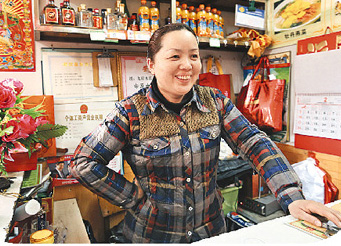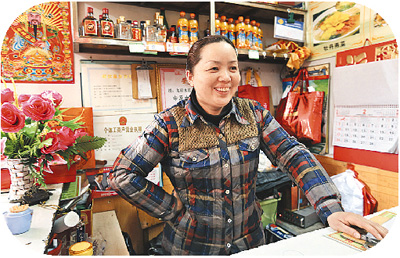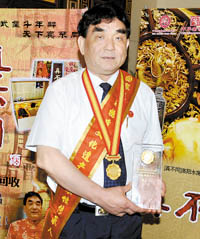-
没有记录!
洛阳水席
2011/3/21 9:26:08 点击数: 【字体:大 中 小】
到洛阳的时候已不是花季,见不到牡丹满城国色天香,不免有些遗憾,还好还有可以吃的非物质文化遗产——水席,以及那一道让人惊艳的“牡丹燕菜”。
那菜上来极是典雅隆重:盘底铺陈着五色的菜丝,中间是一朵鸡蛋糕雕的牡丹花,浇上汤后,花便漂浮在上面。而分盛给每人的小碗中也同样有一朵小小的牡丹花。这要追溯到1973年了,当时周恩来总理陪同加拿大总理特鲁多来洛游览,厨师们用鸡蛋糕精心雕刻了一朵牡丹花放在燕菜上。周总理风趣地称赞:“洛阳牡丹甲天下,菜中也能生出牡丹花!”从此,“洛阳燕菜”便被人们唤作“牡丹燕菜”了。
贵为水席的头道大菜,牡丹燕菜的主料却是最最平常的白萝卜。很多人是怕吃白萝卜的,便不敢动筷,只是看着眼前那精致的一小碗发呆,直到旁边的人说“ 完全没有萝卜味儿!”吃光了自己碗里的不算,还要再添一两碗。 这不需要客气,当年女皇帝武则天吃到这“萝卜丝汤”时,也是大为赞赏,并以其具有燕窝风味赐名“假燕菜”。
水席的特色是菜品汤汤水水,上菜行云流水,与武则天的民间传说渊源很深。全席依序分为前八品、四镇桌、八中件、四扫尾,共 24道菜,预示了武则天执政24年。 前八品为冷盘,以武则天的八大善绩——服、 礼、 韬、欲、艺、文、禅、政为名。接着上四个大菜,每上一个大菜,带两个中菜,称为“带子上朝”。
去年 6月 14 日,国务院发布第二批国家级非物质文化遗产名录,已有百余年历史的中华老字号饭店“真不同”的洛阳水席制作技艺入选,这也是目前全国餐饮业唯一的全套宴席入选国家级非物质文化遗产。
自古以来,游龙门、赏牡丹、品水席就被称为洛阳三绝,在民间更有“不进真不同,未到洛阳城”之说。在认真研习历史文献的基础上,“真不同” 还将洛阳水席融入了盛唐文化、 官场文化、民间文化、民俗文化、戏曲文化及趣味化等诸多元素。
水席可大可小、丰俭随己。在传统名店,可以选择花费数百元甚至几千元上全24 道菜的全席,也可以选择专门为人数较少的游客推出的小型经典组合,再随意些,街头巷尾的小型水席店,点上几道代表菜色,人均不过几十元就能吃得很好。
看着大大小小生意兴隆的水席店,不由想起近年来起起伏伏的鲁菜。鲁菜是“北食”的代表,中国四大菜系之一。如何挖掘鲁菜悠久的历史文化底蕴,适应现代市场需求,包装策划出与市场直接对接的产品,洛阳水席或可为鉴。
Luoyang Shuixi
If you don’t taste Luoyang Shuixi, which is an intangible heritage, besides appreciating peonies when you come to Luoyang, it will be a great pity. Among the Shuixi, the most tempting one is Peony Cubilose. This dish is made very dedicate: lay colorful vegetable shreds on the bottom, a delicate peony in the middle which is carved by cakes. The peony will float on the soup in every bowl. This can date back to 1973, when Premier Zhou was in company with the prime minister of Canada to Luoyang, Premier Zhou praised that: the peony is the best in the world, even dishes can grow out peonies. And from then on, there is always a peony in the middle of bowl and it’s also called Peony Cubilose.
However, as the first main course in Shuixi, the main material is white radish. Many people hate to eat radish, while, it tastes not like rabbit at all. In Chinese history, the only female Emperor, Wu Zetian, granted it Artifical Cubilose when she ate this sliced radish soup out of this reason.
The biggest characteristics are almost all the dishes contain soup and the dishes are brought one by one in a linear sequence. Shuixi is composed of 24 courses which are deep influenced by the legend of Wu Zetian and the 24 courses stand for Wu’s 24 regional years.
In 14th, June, 2011, the making skill of Luoyang Shuixi in Zhenbutong Restaurant, which has been established for at least 100 years, is listed into the Second Intangible National Heritage by the State Department. This is the first whole feast chose as intangible national heritage in China. Studying various documents, Zhenbutong Restaurant combines the flourishing Tang Dynasty culture, official circles culture, folk culture, Chinese opera culture and interest culture into Luoyang Shuixi and develops it into one of the three biggest unique in Luoyang together with the Longmen Grottoes and Luoyang peony. Nowadays, Shuixi is changeable. People can choose the whole feast in traditional restaurants, or choose just several courses among them depending on personal taste in some smaller restaurant.






